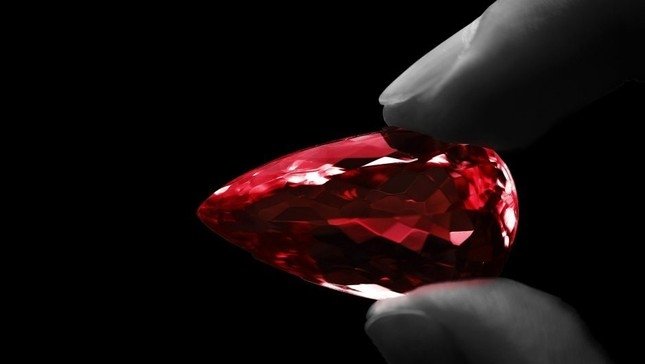Red diamonds are the most expensive and rarest diamond color in the world, and this color diamond is even more rare than pink or blue diamonds.
Unlike other colored diamonds, the red pigment of this colored diamond is not created from impurities such as nitrogen in the diamond’s composition.
Some gemologists believe that the red color of diamonds comes from changes in atomic structure – a phenomenon called plastic deformation – that occur as the diamond is pushed to the Earth’s surface.
Similar to pink diamonds, extreme pressure impacts their molecular structure.
Since 1985, the Argyle diamond mine in Western Australia has been the source of nearly all the few red diamonds that have come onto the market.
The majority of red diamonds are present in South Africa, Australia and Brazil.
The exact formation process of red diamonds remains a controversial mystery in geological circles.
The result of this process is that most red diamonds are quite small in size, only about half a carat to one carat.
The world’s largest red diamond, the Red Shield or Moussaieff Red, was discovered in Brazil in 1989 and sold for $8 million in 2021. The Red Shield weighs 5.11 carats, equivalent to about $1.6 million for
Until the mid-1950s, the only way to own a diamond was to mine it from natural mines.

The scarcity of diamond supplies in 1953 led to the birth of artificial diamonds synthesized by two methods HPHT (high pressure – high heat) and CVD (chemical vapor phase deposition).
Simple way to identify diamonds at home
Sandpaper: natural diamonds have a hardness of 10/10 on the Mohs scale, so they are not easily scratched by external factors.
Fire `tests` real and fake diamonds: natural diamonds are formed underground at a depth of 145 km under pressure and temperature of 900 – 1,300℃.
Step 1: heat the diamond under fire for 20 seconds.
Step 2: drop the diamond into a glass of cool water.
Step 3: take out the diamonds in the cup and gently wipe them clean.
If it is a real diamond, the gem will still sparkle.
Check the diamond by `reading the newspaper`:
Place the diamond on a newspaper page in a well-lit space.
Applying the `fog experiment`:
You can breathe on the diamond and observe the reaction that occurs.
